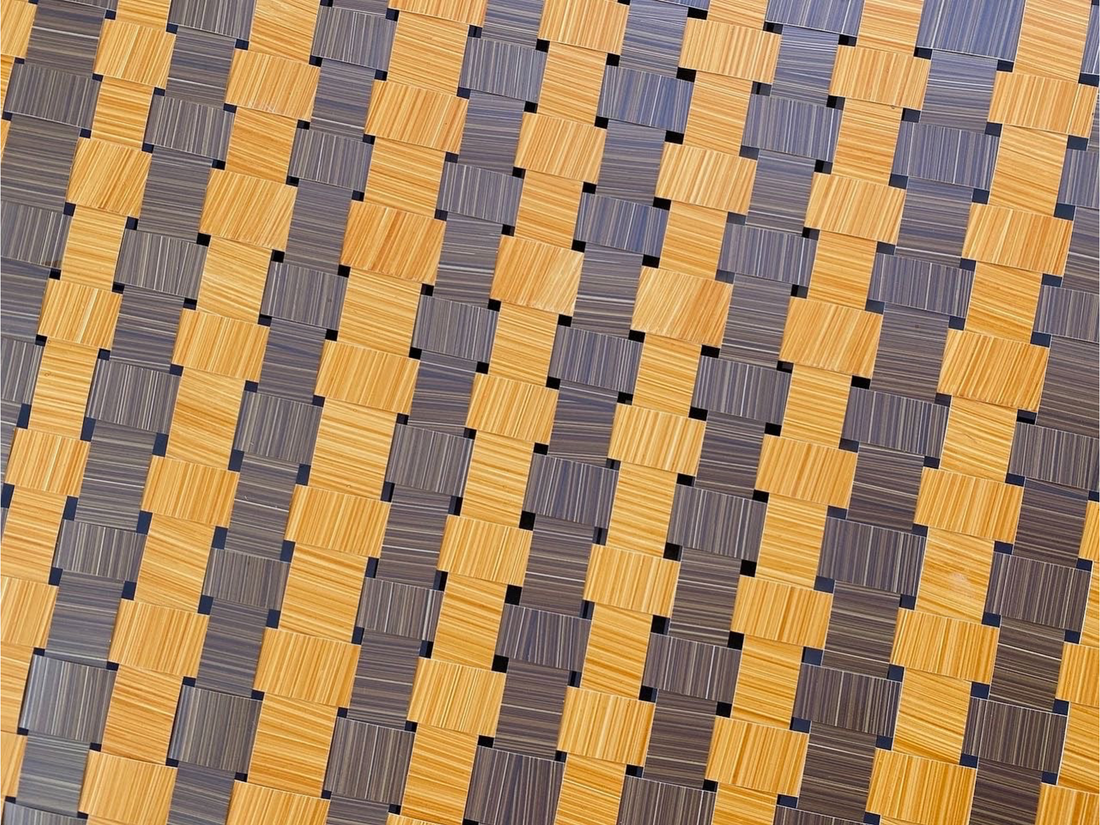There is so much to say about this IRIS weaving that I decided to write a little bit more for anyone interested. IRIS stands for Indicator of Reduction in Soil. Iron- and manganese-coated IRIS devices are used to identify reduced conditions in soil - really, what we are looking for are anaerobic or anoxic or non-oxygenated zones in the soil. If there is significant color change on these devices when installed belowground - we gain a glimpse into the redox (reduction-oxidation) environment and can determine if a soil is an official hydric soil (it’s a requirement for wetland determinations plus hydrophytic vegetation & wetland hydrology).

I have been researching and using IRIS devices since 2004 as a brand-new soil scientist. I was in graduate school in Maryland when we first started to test, explore, and quantify the results we saw in the field. Fast forward to present day - I noticed a bunch of old (they have a shelf life b/c the oxides crystallize over time) IRIS films hanging around thanks to former graduate students (thanks Anna and Chelsea) and thought - I should weave those and then bury them to see a beautiful microbial masterpiece. So, here we are. The orange color is from an iron oxide paint we create in the lab - combining ferric chloride and potassium hydroxide to just the right pH to give us 60% ferrihydrite and 40% goethite. The brown/purple color is a manganese oxide called birnessite that is also synthesized in the lab. Those pigments are painted onto large sheets of thin PVC, then cut, rolled, and put into cylinders we use to deploy them into the soil. Below you can see my mini field assistant from years ago next to some films plus films installed in a wetland at 10,000 ft in the Snowy Range Mountains, and a bucket of iron IRIS ready to be installed, and lastly, films freshly pulled from a wet soil.

I cut the PVC into very thin strips that I could weave into the science tapestry you see above. I buried the piece in a bucket of soil that was fresh mixed with some that was already sitting under water (leftovers from my paint making refuse bucket) plus we included an egg (for added sulfur) and oats (for added carbon). We waited only 7 days b/c I was impatient and pulled the tapestry. Out came the beauty you see above. The newly white areas are zones that were reduced with respect to whichever element (Fe or Mn) that was there and the black is zones of iron monosulfide (FeS), a transitory reduced compound that will oxidize when exposed to air. As you can see in the images, that dark black, FeS, fades over time. We love using compounds found in nature to help understand the belowground world. So much so that we even made an IRIS cake years ago to celebrate.

So - what you see in the tapestry is evidence of anaerobic conditions (an area devoid of oxygen) such that the microbial community needed to use an alternate terminal electron acceptor to perform it’s basic life functions. Oxygen is the most energetically favorable followed by nitrogen, manganese, iron … see the image above. The soil I put into the bucket was already anaerobic from months of sitting in a bucket so the reaction happened within a week. If I was starting with dry soil, I would have waited at least a month before taking a peek at the tapestry.

